Gardening is one of the most rewarding hobbies you can take on, and starting a raised bed garden is a smart way to grow healthy, productive plants while keeping things organized and manageable. Unlike traditional in-ground gardens, raised beds allow you to have more control over your soil quality, drainage, and plant placement. Whether you’re a beginner gardener or an experienced green thumb looking for efficiency, a raised bed garden can transform your outdoor space into a flourishing source of fresh vegetables, herbs, and flowers.
In this article, we’ll walk you through how to start a raised bed garden from scratch, including planning, building, filling, planting, and maintaining your garden for long-term success.
Why Choose a Raised Bed Garden?
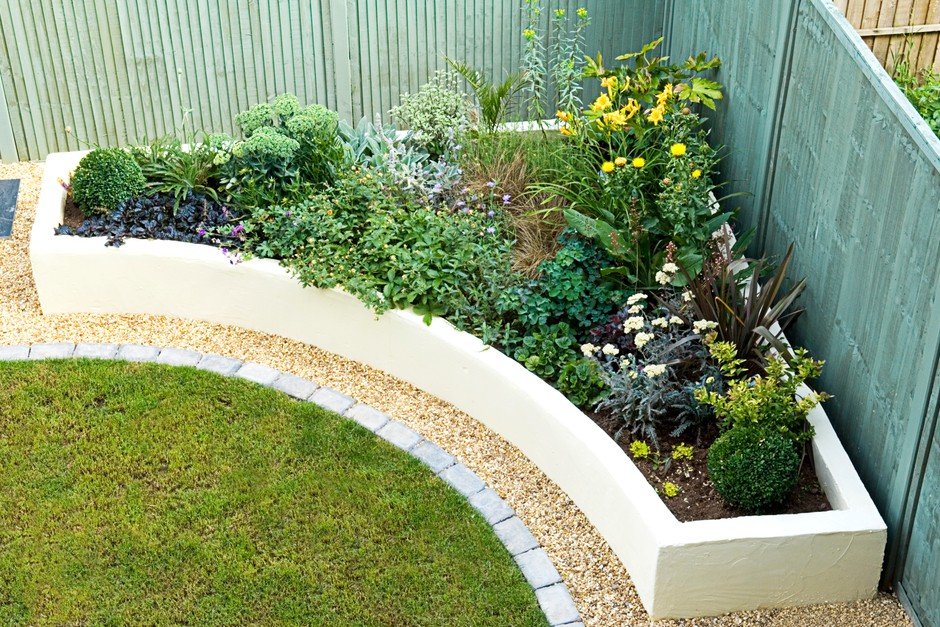
Before diving into the how-to, it’s important to understand why raised bed gardens are so popular. Some of the top benefits include:
- Better Soil Control: You can fill your bed with nutrient-rich, well-draining soil regardless of your native soil conditions.
- Improved Drainage: Raised beds prevent waterlogging, which is essential for healthy roots.
- Easier to Manage: Beds are elevated, reducing bending and weeding efforts.
- Extended Growing Season: Soil warms up earlier in spring and stays workable longer into the fall.
- Neat and Organized: Raised beds give a clean look to your garden and make it easier to rotate crops.
- Fewer Pests and Weeds: Elevating plants reduces weed encroachment and deters some crawling pests.
Step 1: Choosing the Right Location
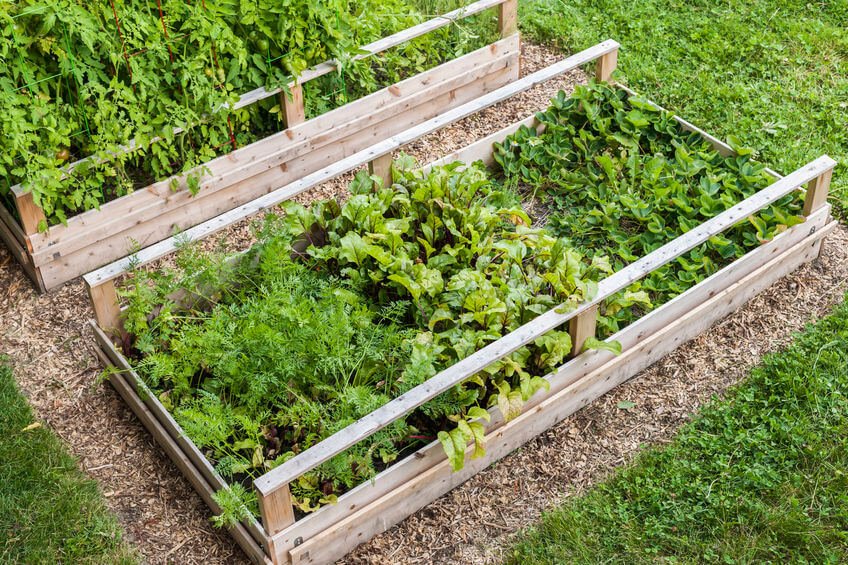
The success of your raised bed garden starts with selecting the right spot. Keep these tips in mind:
- Sunlight: Most vegetables and herbs need at least 6–8 hours of direct sunlight daily. Observe your yard to find a location with adequate light.
- Accessibility: Place the beds close to a water source and in an area that’s easy to reach for planting, harvesting, and maintenance.
- Drainage: Avoid low-lying spots where water tends to pool. Good drainage ensures healthy roots.
- Wind Protection: If possible, situate beds where they’ll be shielded from strong winds, which can stress plants and dry out soil quickly.
Step 2: Planning the Bed Size and Shape
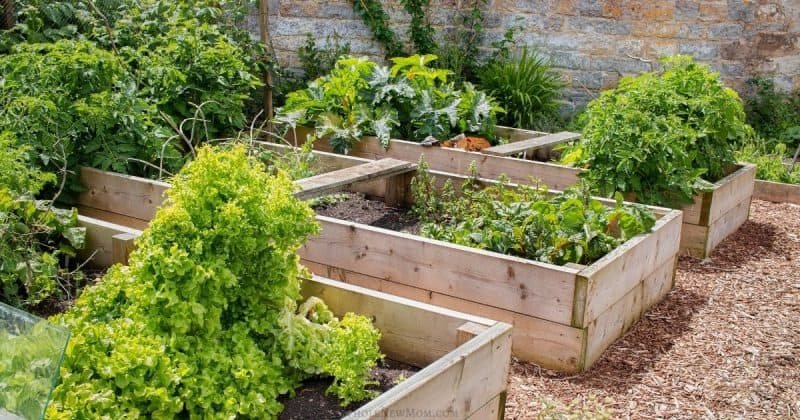
Raised beds can be tailored to your space and gardening goals. Here are some common guidelines:
- Width: Keep beds no wider than 4 feet so you can reach the center from both sides without stepping on the soil.
- Length: Beds can be as long as space allows, but 6–12 feet is typical for easy access.
- Height: Standard heights are 12–24 inches, but taller beds (up to 36 inches) are great for accessibility or poor soil conditions.
- Shape: Rectangular is the most common, but square or L-shaped beds can be used for unique spaces.
Tip: Draw a rough sketch of your garden area to visualize how many beds you can fit and how much walking space you’ll have between them.
Step 3: Choosing the Right Materials
Raised beds can be constructed from a variety of materials, depending on your budget and style.
- Wood: The most popular choice. Use rot-resistant types like cedar, redwood, or cypress. Avoid chemically treated wood that may leach toxins into the soil.
- Stone or Brick: Long-lasting and attractive, though more labor-intensive to set up.
- Metal: Galvanized steel beds are durable and give a modern look but can heat up quickly in direct sun.
- Recycled Materials: Old pallets, logs, or even repurposed containers can work if they’re safe and untreated.
Step 4: Building Your Raised Bed
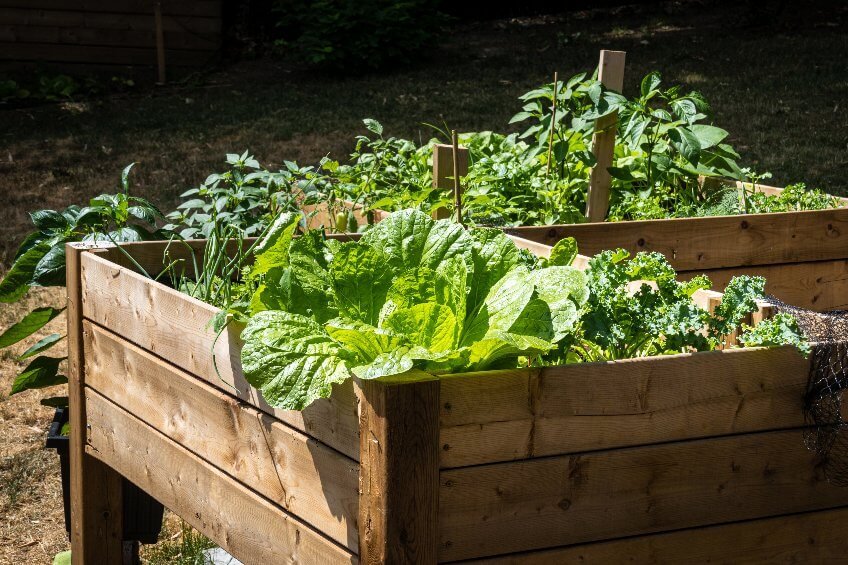
Here’s a simple guide for constructing a wooden raised bed:
Materials Needed:
- Four rot-resistant boards (for the sides).
- Corner posts or brackets.
- Screws or nails.
- Drill or hammer.
Instructions:
- Cut boards to your desired length and width.
- Attach the boards to corner posts using screws or nails to form a sturdy rectangular frame.
- Place the frame in your chosen garden spot.
- Check that the bed is level to ensure even water distribution.
Optional: Line the bottom with hardware cloth or mesh to prevent burrowing pests like gophers from entering.
Step 5: Filling Your Raised Bed with Soil
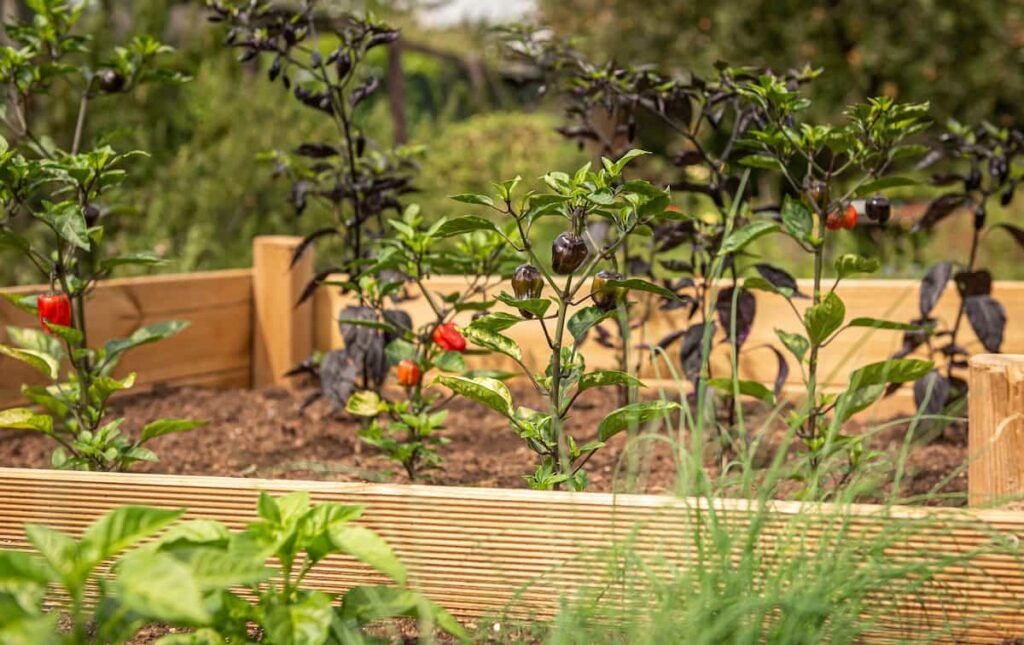
Soil is the most critical element of your raised bed garden. A high-quality mix ensures healthy, productive plants.
Ideal Soil Mix:
- 50% topsoil – Provides bulk and structure.
- 30% compost – Enriches soil with organic matter and nutrients.
- 20% soilless mix (peat moss, coconut coir, or perlite) – Improves aeration and drainage.
Mix thoroughly before filling your bed. Aim for soil that is loose, crumbly, and nutrient-rich.
Tip: Replenish with fresh compost at the start of every growing season to keep soil fertile.
Step 6: Planting Your Raised Bed Garden
Now comes the fun part—planting!
Best Crops for Raised Beds:
- Vegetables: Tomatoes, peppers, carrots, lettuce, radishes, beans, and zucchini.
- Herbs: Basil, parsley, thyme, rosemary, and chives.
- Flowers: Marigolds, nasturtiums, or zinnias (great for pest control and pollinator attraction).
Planting Tips:
- Follow companion planting principles—pair crops that benefit each other (e.g., tomatoes and basil).
- Use succession planting to maximize harvests by replanting quick crops like lettuce after harvest.
- Practice crop rotation each season to prevent soil-borne diseases.
Step 7: Watering and Mulching
Raised beds dry out faster than in-ground gardens, so consistent watering is crucial.
- Water deeply and regularly: Aim for 1–2 inches per week, adjusting for weather.
- Drip irrigation or soaker hoses are ideal for conserving water and keeping foliage dry (which reduces disease risk).
- Mulch with straw, shredded leaves, or wood chips to retain soil moisture, regulate temperature, and suppress weeds.
Step 8: Maintaining Your Raised Bed Garden
To keep your raised bed thriving year after year:
- Fertilize with organic compost, worm castings, or balanced slow-release fertilizer as needed.
- Weed regularly—though you’ll have fewer weeds than a traditional garden.
- Monitor pests such as aphids, slugs, and caterpillars. Use natural controls like neem oil, insecticidal soap, or introducing beneficial insects.
- Refresh soil annually by adding new compost and organic matter.
- Clean up in fall—remove spent plants and add a cover crop (like clover or rye) to protect soil over winter.
Common Mistakes to Avoid
- Overcrowding plants: Raised beds make it tempting to plant too much, but proper spacing ensures healthy growth.
- Neglecting soil quality: Don’t skimp on soil—good soil is the foundation of success.
- Skipping crop rotation: Growing the same plants year after year depletes nutrients and encourages disease.
- Inconsistent watering: Raised beds need regular attention, especially in hot, dry climates.
Final Thoughts
Starting a raised bed garden from scratch might seem like a big project, but once you set up the foundation, it’s surprisingly low-maintenance and highly rewarding. You’ll enjoy higher yields, healthier plants, and a more organized garden space. Whether you want to grow crisp lettuce, juicy tomatoes, fragrant herbs, or colorful flowers, a raised bed gives you the flexibility and control to succeed.
With the right planning, quality soil, and consistent care, your raised bed garden can produce bountiful harvests for many years to come. So roll up your sleeves, grab your tools, and start building your raised bed today—you’ll be amazed at how quickly it transforms your gardening experience.





